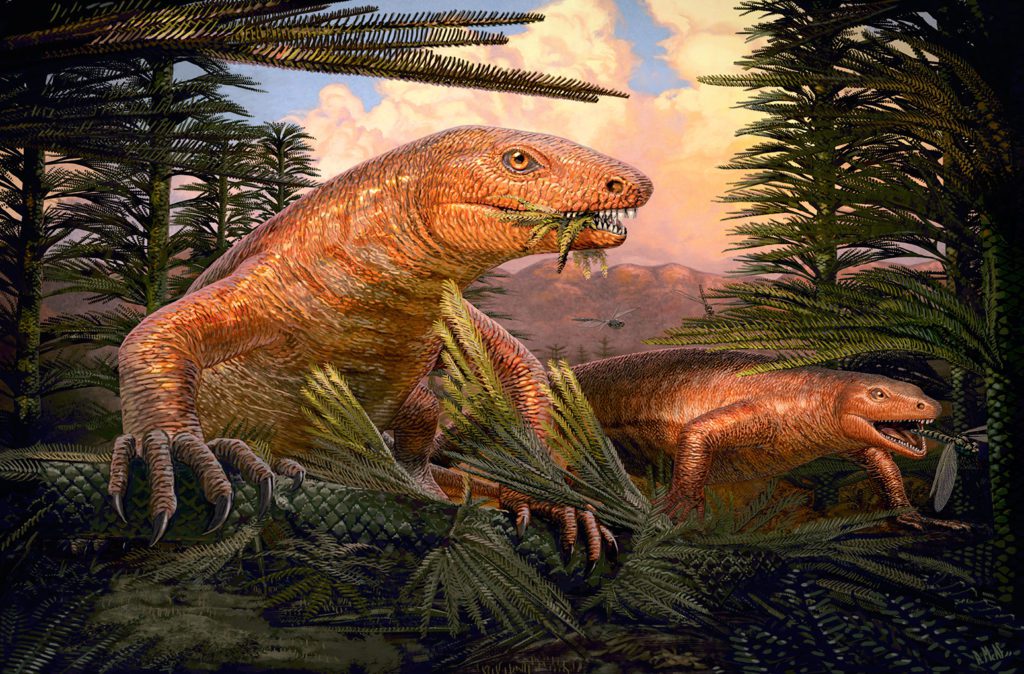
[Pittsburgh, Pennsylvania, March 31, 2020] — Carnegie Museum of Natural History announces the discovery of Martensius bromackerensis, a basal synapsid from the Late Paleozoic (Early Permain, Artinskian) from 283.5 to 290.1 million years ago. The discovery, published today in a paper entitled “New Primitive Caseid (Synapsida, Caseasauria) from the Early Permian of Germany,” names the caseid in honor of Dr. Thomas Martens, retired curator at Germany’s Gotha Museum der Natur and discoverer of the famed Bromacker Quarry, site of many notable fossil discoveries. The paper’s authors include lead author David S Berman, Curator Emeritus at Carnegie Museum of Natural History and colleagues Hillary C. Maddin at Carleton University, Ontario; Amy C. Henrici, Collection Manager at Carnegie Museum of Natural History; Stuart Sumida at California State University, San Bernardino; Diane Scott at University of Toronto at Mississauga, Ontario, and Robert R. Reisz at University of Toronto at Mississauga.
The four well-preserved fossil skeletons, discovered between 1995–2006 at the Bromacker Quarry in Germany’s Thuringian Forest, provide comprehensive knowledge of skeletal morphology, suggesting an insectivorous juvenile dentition that was replaced in adults by a dentition suggestive of an omnivorous diet, though features of the skeleton indicate it was herbivorous. The researchers theorize that a juvenile diet of insects provided a source of bacteria to the gut to aid in processing the presumed adult diet of cellulose-rich, high-fiber plants, roots, and tubers that would have been otherwise difficult to digest. Caseids are an extinct family of pre-dinosaur synapsids, a group that later gave rise to mammals.
“This is an incredible find,” said Amy Henrici, research team member and Collection Manager of Vertebrate Paleontology at the Carnegie. “It has been theorized that among caseids, insectivores evolutionarily preceded herbivores. Martensius suggests this transition may have occurred ontogenetically, or within its lifespan.”
This discovery underscores a 50-year association with Carnegie Museum of Natural History for lead author and Curator Emeritus David Berman, who, along with Henrici, began expeditions to Germany’s Bromacker Quarry in 1993 after the reunification. Another milestone discovery by the team in 2010 led to the describing of Fedexia striegeli, a new genus and species of amphibian found on FedEx property near the Pittsburgh International Airport.
“This has been a highlight of my career as a vertebrate paleontologist,” said Berman. “When the Bromacker excavation was begun in 1993 by an international team of colleagues that included Thomas Martens and me, we never anticipated the great number and variety of discoveries we would make and report on in about three dozen prominent scientific publications. What’s been most personally gratifying are the connections made with the many renowned scientists who have joined Dr. Martens and me to make the Bromacker project so highly successful.”
